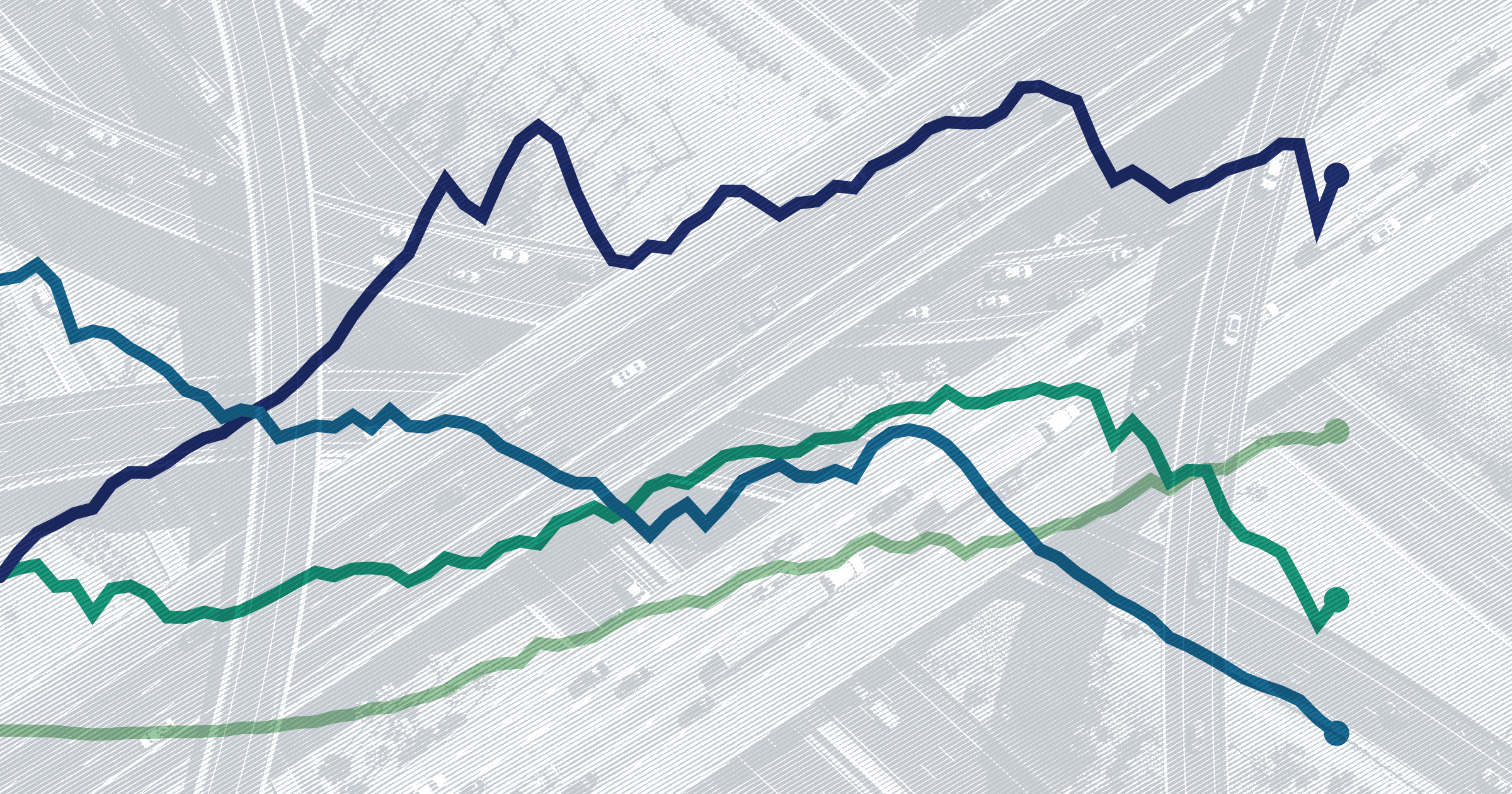Population and society
How many people die in traffic accidents in the US?

Between lockdowns, shut-downs, quarantines, and closures, COVID-19 has changed the way people get from point A to point B — if they even leave point A at all.
Monthly transit usage — which includes public transportation like buses, subways, trains, trolleys, and ferries — began falling in March, when states implemented stay-at-home orders in response to the coronavirus pandemic.
According to data from the National Transit Database, monthly transit ridership hit a low of 156.6 million rides in April 2020 — that’s 81.3% lower than the 835.2 million rides taken in April 2019.
While transit usage has risen since that time — as stay-at-home orders were lifted — ridership is still down compared to previous years. July 2020 ridership (281.2 million) was down 64.9% from July 2019 (801.6 million rides).
Of the 20 largest service areas across the country, Tampa, Fla., had recovered the most ridership as of July, with 48% fewer riders in July compared to July 2019. Washington, DC's ridership recovered the least, with 81.6% fewer riders in July compared with July 2019.
The drop in ridership may have a significant effect on public transportation finances. In 2018, fares accounted for $16 billion in public transit revenue. That represented 30.7% of the $52.3 billion in operating revenue, according to data cited in a recent report from the Congressional Research Service.
Riders also racked up fewer miles during the pandemic. In April of last year, the total number of miles traveled while transporting passengers was 357.1 million — that’s 14,342 trips around the Equator. This April, the total number of miles was 207.2 million — or 8,321 trips. This represents a 42% decline in total miles traveled from April 2019 to April 2020.
Total miles traveled have slightly risen during the summer months, reaching 239,241,941 in June 2020. However, this is far below the 300 million or more miles traveled each month since August 2005. As a result of the increase in miles traveled this summer, the miles driven per trip increased from 0.43 miles in February 2020 to 1.32 miles per trip in April of this year. In July, that number was 0.77 miles per trip.
New York City is worth zooming-in on as it accounted for 44.5% of all transit trips in 2019. It was also one of the epicenters of the COVID-19 pandemic.
On March 5, 2020, the ridership on NYC subways was nearly 5.5 million, according to the New York City Metropolitan Transportation Authority. That was consistent with the 2019 daily average. On March 7, New York Governor Andrew Cuomo declared a state of emergency after 89 cases were confirmed in his state. A day later, New York City issued new commuter guidelines, urging sick individuals to avoid public transit and encouraging citizens to avoid densely-packed trains, subways, and buses.
By March 16, ridership fell by 60%. On April 1, 2020, only 516,174 people rode a subway — a 91% drop from the 2019 average ridership.
New York subway ridership has remained between 90% and 65% below what it was in 2019. On September 18, for example, estimated ridership on the New York subway was 1,674,770 — 70.7% lower than the 2019 weekday average.
New York bus ridership experienced a similar nosedive in the early days of COVID-19, dropping from 2.2 million riders on March 5, to 299,600 on April 5. Compared to 2019, bus ridership was down by as much as 84% in April.
Bus ridership has returned faster than subway ridership, though it remains around half of 2019 levels. But even with that rebound, New York bus usage remains far below its previous years: on September 18, 2020, the total estimated ridership on buses of all types was 1.7 million. That’s a 51% decline from the average weekday in 2019.
Before the pandemic, rail ridership was higher than bus ridership. In February 2020, for example, around 428 million people were using rail-based transportation compared to the estimated 365 million people using buses.
In recent months, however, people returned to buses slightly faster than they did to rails. In July 2020, 98 million riders boarded rail-based transportation. That same month, 176 million people boarded buses.
As some states ease lockdown restrictions, and others experience new waves — or rebounds — of COVID-19, it remains to be seen how or if riders will return to transit services, and if those changed habits are permanent.
Learn more from USAFacts and get the data directly in your inbox by signing up for our newsletter.
Trips or Unlinked Passenger Trips (UPT)
The number of passengers who board public transportation vehicles. Passengers are counted each time they board vehicles no matter how many vehicles they use to travel from their origin to their destination.
Miles traveled or Vehicle Revenue Miles (VRM)
The miles that vehicles are scheduled to or actually travel while in revenue service.